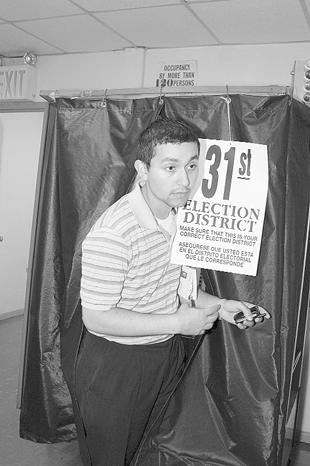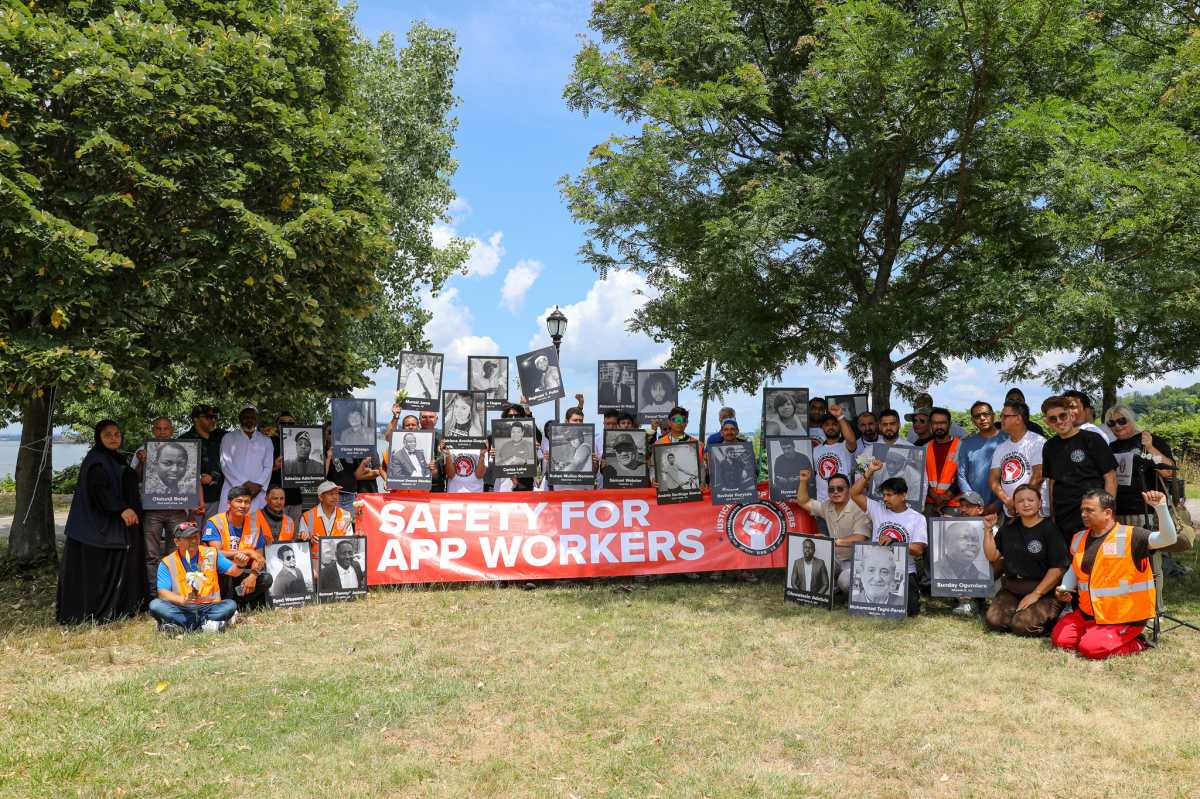By Ronda Kaysen
When New Yorkers cranked arcane metal levers from left to right to cast their ballots on Tuesday, they did so for one of the last times. By the next election, every polling station will have at least one new voting machine. And in 2007, every single mechanical booth in the city will be replaced with modern voting technology. But a battle is raging over just what sort of technology the state should use.
By 2007, New York must comply with the Help America Vote Act, federal legislation passed in the wake of the 2000 presidential election debacle in Florida to modernize voting technology. New York City will need to replace every one of its 7,349 aging manual lever machines with new technology by the 2007 September primaries.
Board of Elections commissioners across the state face two choices: optical scanners that read paper ballots much like a standardized test; or touch-screen electronic machines that electronically tally the votes. The touch-screen ballots will print a paper receipt for each ballot cast, much like an A.T.M., but votes will be tallied electronically. Election officials will count paper printouts for 3 percent of the machines, although a discrepancy will not necessarily initiate a full paper recount.
Critics of touch-screen voting worry the new technology is unreliable and could be vulnerable to tampering or computer error. With memories of touch-screen-instigated long lines and ballot inconsistencies in the 2004 presidential election still fresh in voters’ minds, many worry that New York, if it goes the way of the electronic ballot, might face similar problems.
The companies that make both options insist their computer systems are accurate and, some argue, more affordable than optical scanners. Regardless, they say, the decision lies in the hands of the Board of Elections and voters will be delivered trustworthy machines.
On the eve of the mayoral election, the League of Women Voters and New Yorkers for Verified Voting, gathered on the steps of City Hall for a late-morning press conference to express their support for optical scanners. With counties expected to make decisions in the coming months — each county and New York City will choose their preferred method independently — all the talk about ballots is reaching a fevered pitch.
“You’ve got to be out of your mind to use the touch screen” technology, Congressmember Jerrold Nadler, who attended the Nov. 7 rally, told The Villager. “There could be a virus put into the computer that says, Disregard every third Democratic vote. That could be done by anybody. The voting machine companies will tell you, ‘We have very strong safeguards against that.’ They may be strong until somebody creates better technology.”
“We want to avoid another Florida,” said Felicia Feinerman, legislative director for Assemblymember Scott Stringer, the incoming Manhattan borough president, who also attended the rally. Florida switched to touch-screen voting machines after the 2000 presidential election and still experienced delays in 2004, she noted. “We don’t want to fall into that. We should do it with something that we trust,” Feinerman said. “Optical scans are the way to go.”
But vendors that make both options insist the touch-screen machines are safe and secure — and worth considering. “There is a perception out there that’s existed since 2000” that electronic machines are less reliable, said Alfie Charles, a spokesperson for Sequoia Voting Systems, a California-based company. Sequoia made touch-screen machines with a paper trail that were well received in Nevada in 2004. “There are different political constituencies who have embraced optical-scan paper against electronic machines and haven’t reassessed that position in light of the paper record.”
With a paper trail attached to the touch-screen machines, “there’s no ambiguity,” he insists. Optical scanners, however, are a far from perfect alternative, he added. “With the paper ballots, voters mark by hand and will occassionally make errors. Instead of a hanging chad [as was the case in Florida in 2000] it would be a smudged selection on a candidate or a stray mark.”
Election Systems & Software, a Nebraska-based vendor bidding for New York’s business, developed a new touch-screen model specifically to meet New York State’s needs.
“It’s done in a very secure way and a way that has provided voters with reliable vote count,” said Ken Fields, a spokesperson for the company. Although this specific model has never been used in an election, the touch screens have a long track record, Fields said, noting, “The E.S.&S. technology has proven to be very reliable.”
Fields was reluctant to advocate either the touch-screen or optical-scanner option, however, saying that his company sold both alternatives and presented both options to election board commissioners. “It’s not our place to recommend a preference for them,” he said.
Optical scanners are also more expensive, said Sequoia’s Charles. Sequoia estimates optical scanners will cost the state $357 million over 10 years, opposed to touch-screen machines that will cost about $162 million.
The state will be able to tap into $66 million in federal funds to finance the switch, covering any remaining costs on its own.
Critics disagree with Sequoia’s cost assessment, insisting that the numbers do not take into account that larger districts will need more than one touch-screen machine, which cost $8,000 apiece. A large district would need multiple optical scanners, which cost about $5,000 apiece, because voters cast their ballots at booths, which will cost $200 each.
“With an optical scanner, you only need one per polling place. An optical scanner can replace three to four machines. It’s a much cheaper system,” said Adrienne Kivelson, an election specialist for the New York City League of Women Voters.
Beneath the concerns of cost and accuracy lies a deep-seated fear among critics that a move to an electronic system might undermine the electoral process. “Whatever’s going on, something’s wrong,” said Teresa Hommel, creator of Wheresthepaper.org, an anti-electronic ballot Web site.
The electronic ballot sets the stage for a “secret vote count that no one can observe,” she said, adding that her parents, who were Jewish, fled Nazi Germany during World War II. “You don’t know if the voters are creating the answer or a malicious insider or an outside hacker, and that’s not democracy.”
The decision will ultimately come down to the state’s election commissioners who have been handed a short timetable by the state Legislature, which only finally passed legislation complying with the federal law this summer. “We have been trying to do as much as we can to get ready for this huge transition,” said John Ravitz, executive director of the New York City Board of Elections, adding that whatever system is ultimately selected, the board will need to purchase the first 1,500 new machines, train 30,000 poll workers and “lower public anxiety” by September 2006. “The legislature really backed us into a corner because they sat on this issue for two years.”
The state Board of Elections will hold a public comment period before it certifies vendors. Ravitz does not think all the commissioners will be warm to touch-screen technology. “Some commissioners will raise some concerns,” he said, adding that an internal working group has been assembling criteria for the commissioners to follow. “Security is one of the top priorities that we’ll have,” he said.
































